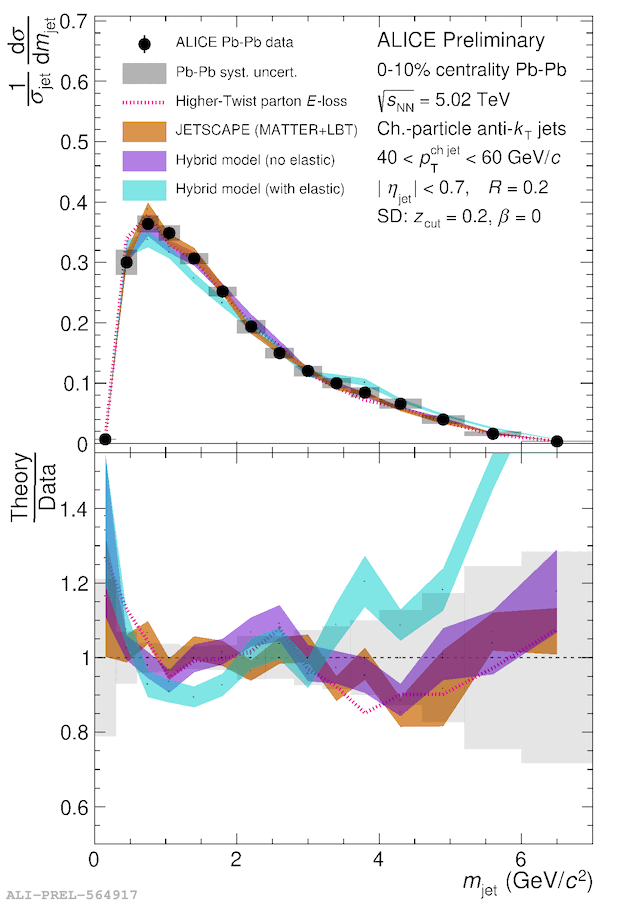
Measurement of the groomed jet mass in Pb-Pb collisions at $\sqrt{s_\mathrm{NN}} = 5.02$ TeV from $40 < p_\mathrm{T}^\mathrm{ch\;jet} < 60$ GeV/$c$ with $R=0.2$ as compared to various models. Grooming is carried out using the Soft Drop algorithm with $z_\text{cut}=0.2$ and $\beta=0$. On the top panel, the black data points and associated vertical error bars correspond to the ALICE measurement and its statistical uncertainties, with the grey boxes corresponding to systematic uncertainties. The data distribution is normalized to the tagging fraction. Also on the top panel, each model is presented with a box corresponding to the purely statistical uncertainties of the model calculation. Each of these models is set to have the same normalization as the data curve. On the bottom panel, the ratio of each model to ALICE data is presented. The total uncertainties on the model calculations are shown as bands around the points for each model. The grey bands around unity correspond to the combined statistical and systematic uncertainties on the measured data, added in quadrature.
The Higher-Twist parton energy loss approach to jet quenching [1] is shown, using POWHEG [2] with PYTHIA [3] matching at NLO as a baseline; a prediction using JETSCAPE [4] is given, with an in-medium parton shower described by the MATTER [5] (high-virtuality regime) and LBT [6] (low-virtuality regime) models; finally, predictions using the Hybrid model [7] both with and without elastic Molière scattering [8] are also given.
[1] Chin. Phys. C45 (2021) no. 2, 024102, arXiv:2005.01093 [hep-ph]
[2] Nucl. Phys. Proc. Suppl. 205-206:36-41 (2010), arXiv:1007.3893 [hep-ph]
[3] Comput. Phys. Commun. 191 (Jun, 2015) 159–177, arXiv:1410.3012 [hep-ph]
[4] arXiv:1903.07706 [nucl-th]
[5] Phys. Rev. C 88 (2013) 014909, arXiv:1301.5323 [nucl-th]
[6] Phys. Rev. C 91 (2015) 054908, arXiv:1503.03313 [nucl-th]
[7] JHEP 10 (2014) 019, arXiv:1405.3864 [hep-ph]
[8] JHEP 01 (2019) 172, arXiv:1808.03250 [hep-ph]
